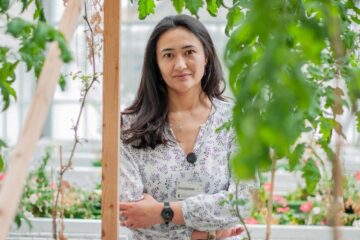Quick test for plant disease

A new method will detect club root far more efficiently than before. This implies less waste and higher profits in farming.
Club root disease is very harmful to cultivated crucifers, i.e. various forms of brassica, especially cabbage. In Norway and in the rest of the world, huge crops are infected by the disease each year. For the farmer, crop failure may be up to 100 percent.
“So far we have lacked a quick method of detecting club root infections in the soil. Now we are in the process of developing a method which can detect infections within a day or two,” says researcher May Bente Brurberg at the Norwegian Crop Research Institute.
Undoubtedly, there is a great potential here. Various forms of cabbage constitute an entire 40 percent of the vegetable farming acreage in Norway. Additionally, you have the production of oilseeds and lettuce.
The disease is caused by the slime mould fungus Plasmodiophora brassica. Present in the soil, the fungus causes abnormal cellular growth and swollen roots. This reduces the plant’s absorption of water and the intake of nourishment, which in turn leads to smaller crops of poorer quality.
“So far it has been difficult to detect club root infections because Plasmodiophora brassica is a parasite which cannot be grown in an artificial medium,” Brurberg explains. The diagnosis requires extensive greenhouse testing and it takes six to eight weeks before you have the results. A well-established method allowing the detection of infections within a day or two may prove very useful.
“The new method may also permit the evaluation of future strategies to fight club root. A continuation of the research may be to test a series of integrated and ecological measures to fight club root disease. A quick test will be of tremendous importance to such a project,” Brurberg explains.
Joining the Norwegian Crop Research Institute is the Norwegian association of gardeners and a number of marked gardens producing brassica which they sell to farmers.
Media Contact
More Information:
http://www.planteforsk.noAll latest news from the category: Agricultural and Forestry Science
Newest articles

She deciphers how tomato roots communicate
Ora Hazak has always been fascinated by plants and is studying the signals that roots send to the rest of the organism. She aims to understand this communication in order…

Laser excitation of a nucleus
A long-awaited breakthrough opens the door to a new type of atomic clock and the investigation of fundamental questions in physics. After decades of investigation, researchers made an extraordinary quantum…

Recovering phosphorus from sewage sludge ash
Chemical and heat treatment of sewage sludge can recover phosphorus in a process that could help address the problem of diminishing supplies of phosphorus ores. Valuable supplies of phosphorus could…





















